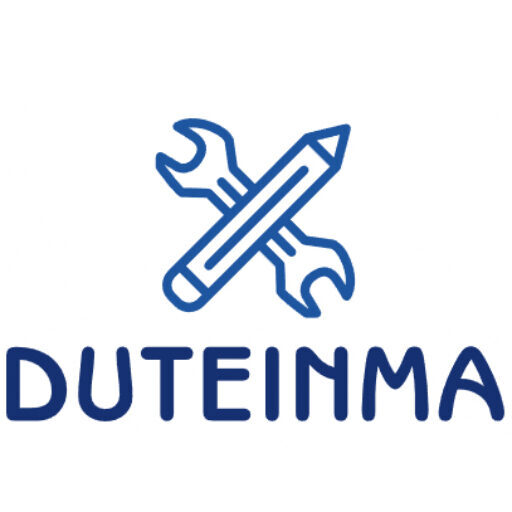Conveyor Belt Systems Reshaping Logistics and Baggage Handling
The global conveyor belt system market is projected to surpass $750 مليار بواسطة 2025, driven by technological advancements that cut operational costs by 35% و increase processing speeds by 40%.
As essential infrastructure in logistics warehouses و airports, modern conveyor belt systems enable seamless, high-volume material and baggage transport. Today’s systems are smarter, faster, and greener.
على سبيل المثال:
FedEx’s Memphis hub implemented a fully automated modular conveyor belt system, reducing manual sorting labor by 60% and improving parcel throughput by 45%.
Singapore Changi Airport uses an RFID-enabled baggage conveyor system, achieving 99.8% baggage accuracy while reducing lost luggage claims by 70%.
This article explores how modern conveyor belt systems work, key innovations, ROI benchmarks, and actionable insights for warehouse and airport applications.
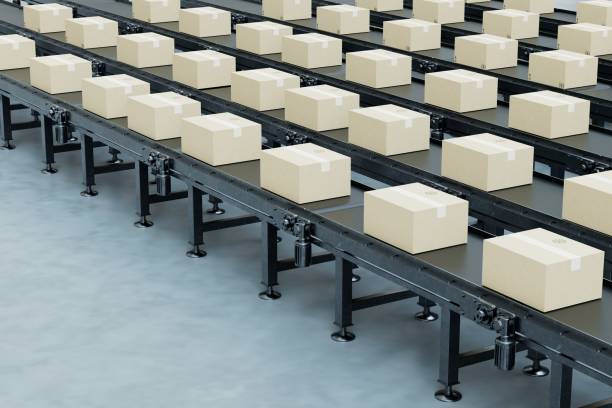
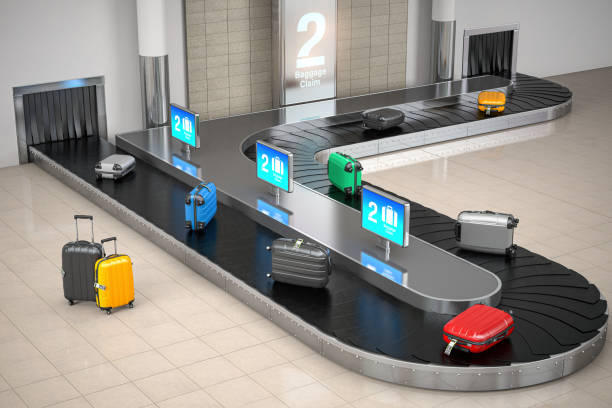
How Modern Conveyor Belt Systems Work
Core Components & Mechanics
A conveyor belt system is an integrated machine made of:
Motor Drives: Power the belt via Variable Frequency Drives (VFDs) to match speed with system load.
Conveyor Belts: Durable materials like rubber, بولي كلوريد الفينيل, or steel-reinforced composites suited for cargo boxes, baggage, or pallets.
Idler Rollers & Pulleys: Maintain tension and redirect belt movement.
Sensors & Controls: Ensure real-time speed adjustments and smart fault detection.
دراسة حالة (اللوجستية): A leading e-commerce warehouse in Germany reduced package transit time by 35% after replacing fixed-speed drives with VFD-based conveyors.
دراسة حالة (Airport): Atlanta Hartsfield–Jackson Airport upgraded to modular conveyor belt systems with smart diverters, handling 30% more bags per minute without increasing footprint.
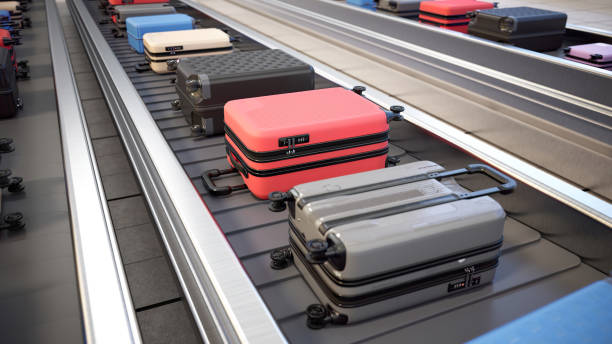
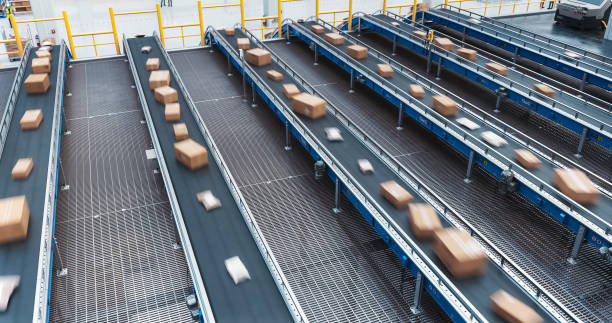
Key Innovations in Conveyor Belt Systems
1. Energy-Efficient Drive Technologies
VFDs (Variable Frequency Drives): Adjust motor output based on load. Warehouses report 20–25% energy savings سنويا.
Regenerative Braking: Captures deceleration energy—ideal for inclined baggage systems—cutting electricity usage by ما يصل الى 25%.
Brushless DC Motors: Offer quiet operation and reduced maintenance in baggage claim areas.
2. مادة & Structural Advances
Modular Plastic Belts: Common in distribution centers for handling small packages without product jams.
Flame-Retardant & Anti-Static Belts: Used in airports to ensure safety compliance and avoid static-related baggage errors.
Self-Cleaning Belts: Installed in high-traffic hubs like Hong Kong International Airport to prevent debris buildup and reduce downtime.


Industry Applications & ROI: Logistics and Airports
1. اللوجستية & E-Commerce Fulfillment Centers
Modular conveyor systems help Amazon, JD Logistics, and DHL reduce setup time by over 60% when reconfiguring sorting lines.
Barcode & RFID readers integrated into belts enable real-time tracking, reducing missorts by 98%.
Case Example: A fulfillment center in Poland reduced labor costs by 32% after integrating a smart conveyor grid connected to WMS (نظام إدارة المستودعات).
2. Airport Baggage Handling Systems
Dynamic diverter arms route bags to specific carousels, improving bag transfer accuracy by over 99%.
BHS (Baggage Handling Systems) like the one at Doha’s Hamad International Airport process over 8,000 bags/hour using high-speed conveyors with embedded load cells and image scanners.
ROI Insight: Airports typically see system payback in 18 شهور due to improved accuracy, reduced staffing, and lower insurance claims for mishandled luggage.
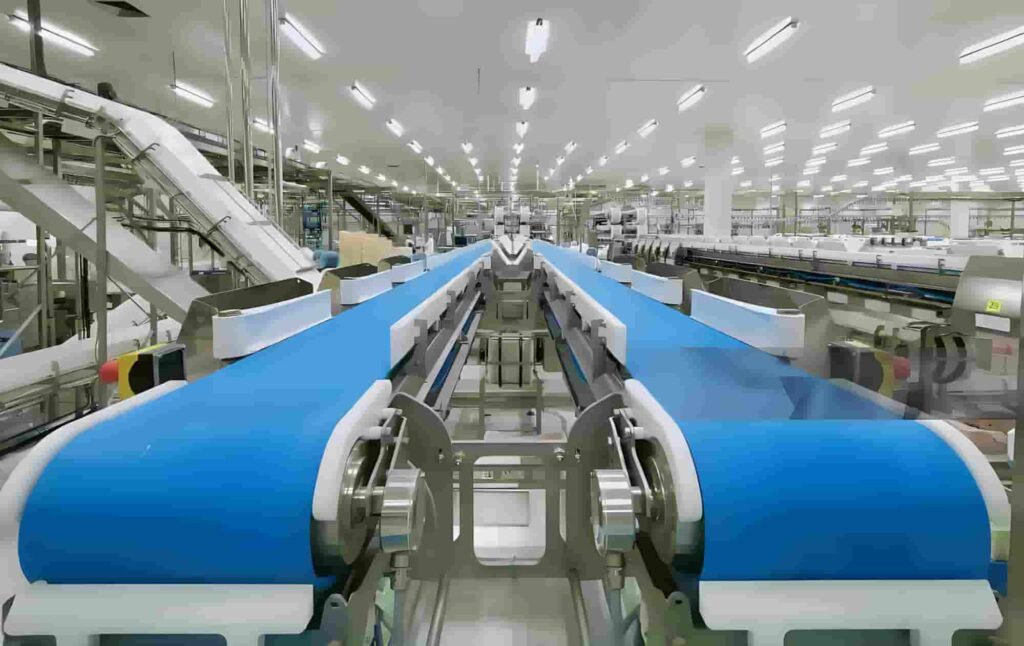
يكلف & Maintenance Optimization of Conveyor Belt Systems
1. Installation Costs
Warehousing Systems: ~$1,200–$1,800 per linear foot, depending on sorting complexity.
Airport BHS Installations: ~$2,500–$3,500 per linear foot, due to regulatory standards and X-ray integration.
Cost Variables:
Belt type (flat, modular, slat)
Incline/decline requirements
Payload characteristics
Environmental conditions (على سبيل المثال, درجة حرارة, dust levels)
2. Predictive Maintenance & المراقبة الذكية
Real-time belt tension monitoring: Prevents slippage and deviation, lowering maintenance costs by 30%.
Smart IoT sensors: Installed in Amazon and FedEx facilities for proactive maintenance alerts, cutting downtime by 40%.
Airport Examples: Heathrow uses thermal imaging to identify motor overheating before failure, improving uptime.
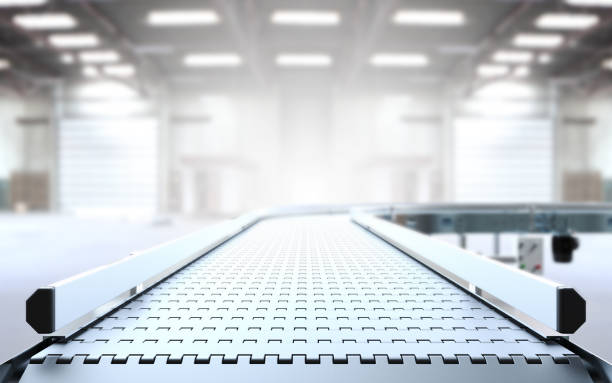

Future Trends in Conveyor Belt Systems
1. Green Logistics & Sustainable Airports
Solar-powered conveyors: Already in pilot at Port of Rotterdam warehouses, reducing energy bills by 15–20%.
Energy Recovery Systems: Being trialed in Dubai Airport’s baggage lines, reusing kinetic energy from braking motors.
Low-emission conveyor belts: Made of recyclable thermoplastic elastomers.
2. Modular and Scalable Design
Quick-connect modules: Warehouses reconfigure belt systems in under 2 ساعات without halting operations.
Adjustable belt widths (40 mm to 1,200 مم): Suited for varied box or baggage dimensions.
Plug-and-play diverters: Allow airports to switch carousel assignments during peak hours without manual intervention.
.jpg)
Benefits of Conveyor Belt Systems in Logistics & المطارات
| Benefit | Logistics Warehouses | المطارات |
|---|---|---|
| تخفيض التكلفة | حتى 35% | حتى 30% in baggage ops |
| Energy Efficiency | 15–25% annual savings | 20% via regenerative braking |
| Speed Increase | 40% faster sorting | 30% more bags/min processed |
| Sorting Accuracy | حتى 99.9% with RFID | 99.8% baggage routing success |
| ROI Timeframe | 12–14 months | 16–18 months |

Optimize Your Conveyor Belt System: Next Steps
✅ Download Our Free ROI Calculator
Tailored for logistics and airport operations using 2025 industry benchmarks.
✅ Join Our Webinar
Learn how smart conveyors و modular belt systems can reduce setup and operating costs by 35% or more.
خاتمة: Modern Conveyor Belt Systems Are Mission-Critical for High-Volume Operations
From handling thousands of e-commerce packages per hour to routing millions of baggage items daily, modern conveyor belt systems are essential for operational excellence in both logistics and airports.
With innovations like modular design, energy recovery, smart sorting, و الصيانة التنبؤية, upgrading your conveyor system is a high-ROI move with immediate and long-term benefits.
